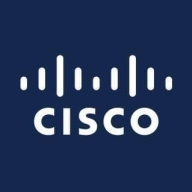

Red Hat Ansible Automation Platform and Cisco DNA Center both compete in the automation and network management sector. Cisco DNA Center is favored for its robust network management capabilities, especially in integrated Cisco environments, whereas Ansible stands out with its simplicity and ease of use.
Features: Red Hat Ansible Automation Platform is known for its agentless architecture, utilizing simple YAML syntax for configuration management. It provides flexible, role-based access control and a comprehensive documentation suite. Cisco DNA Center excels in providing centralized control and advanced AI-driven network insights, with seamless integration with other Cisco devices ensuring enhanced network security.
Room for Improvement: Ansible's main challenges revolve around scalability issues due to SSH, along with its GUI and documentation needing improvement. Cisco DNA Center could be more competitively priced and offer better integration with non-Cisco products, with room for improvement in configuration management complexities.
Ease of Deployment and Customer Service: Ansible is deployable in hybrid, on-premises, and multi-cloud environments, with strong community support, though some find the official support lacking. Cisco DNA Center's primary on-premises deployment can be complex, but integration within the Cisco ecosystem is beneficial, and while customer support is generally good, ease-of-use could enhance the setup experience.
Pricing and ROI: Ansible’s open-source basis offers cost benefits, but enterprise features necessitate additional expenditure, providing significant ROI through operational efficiency. Meanwhile, Cisco DNA Center, though more expensive with substantial licensing fees, justifies its cost through comprehensive network management capabilities, potentially limiting adoption in smaller networks due to its pricing structure.


Cisco DNA Center offers a comprehensive platform for network automation and management, providing detailed analytics, enhanced security, and streamlined operations for both wired and wireless networks.
Cisco DNA Center integrates with Cisco infrastructure to deliver efficient network automation and management, helping organizations improve network visibility, security, and control. It supports AI-driven analytics and automated workflows to enhance operational efficiency and reduce errors. Challenges include compatibility with third-party systems, steep learning curve, and complex deployment. Its interface facilitates centralized control, vital for troubleshooting, policy management, and configuration management, with support for zero-touch provisioning and SD-Access.
What are the key features of Cisco DNA Center?In sectors such as healthcare, finance, and retail, Cisco DNA Center is utilized for its ability to enhance security and compliance, manage large-scale networks, and provide detailed analytics for better operational decision-making. Its support for location tracking and policy automation ensures efficient network management across diverse environments.
Red Hat Ansible Automation Platform is a powerful network automation solution that allows organizations to handle every aspect of their application launch process within a single product. It enables users to share their automations so that teams within an organization can collaborate on various projects with ease. Ansible Automation Platform is designed to be used by all employees involved in the network automation process.
Red Hat Ansible Automation Platform Benefits
Some of the ways that organizations can benefit by choosing to deploy Red Hat Ansible Automation Platform include:
Red Hat Ansible Automation Platform Features
Reviews from Real Users
Red Hat Ansible Automation Platform is a highly effective solution that stands out when compared to many of its competitors. Two major advantages it offers are its automation manager and its comprehensive centralized GUI-based management interface.
MD J., a solution architect at STBL, says, “The automation manager is very good and makes things easier for customers with multi-cloud platforms.”
Aankit G., a Consultant at Pi DATACENTERS, writes, “We like the GUI-based interface for the tower. Before, we only had a command-line interface to run all the Ansible tasks. Now, the Ansible tower provides the complete GUI functionality to run, manage, and create the templates and the Ansible jobs. This includes the code and YAML file we can create. The GUI interface is the added advantage of this solution, including some integration with the different plugins.”
We monitor all Network Automation reviews to prevent fraudulent reviews and keep review quality high. We do not post reviews by company employees or direct competitors. We validate each review for authenticity via cross-reference with LinkedIn, and personal follow-up with the reviewer when necessary.